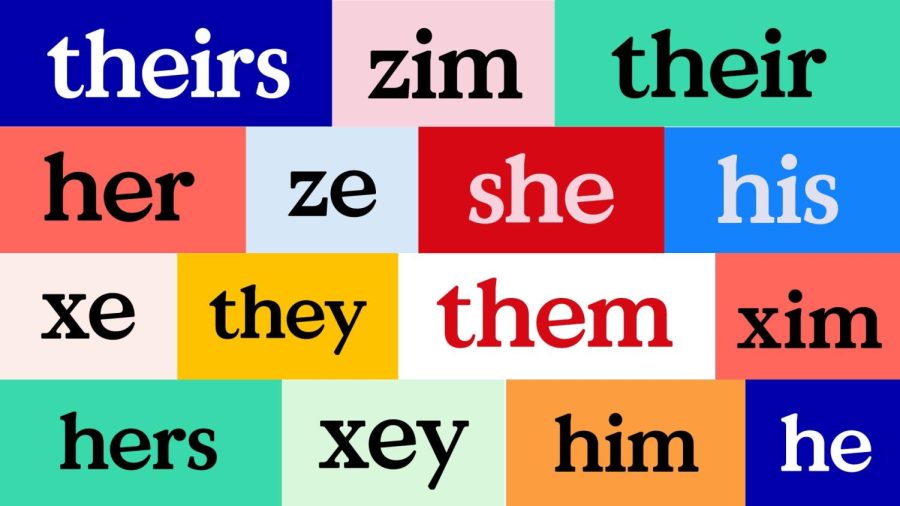Teachers Need To Take Consideration of Using Student Pronoun Preferences
January 28, 2022
Pronouns are used to refer to one another. We mention it to each other and ourselves using personal pronouns. The most common pronouns we know today are he/him, she/her, and they/them, but some people go beyond those pronouns, neopronouns to be specific. Neopronouns are a personal pronoun or an idiom that represents a person or a group of people. In today’s world, neopronouns have become the topic of discussion and have been used by various people. All individuals are able to use their pronoun preference without them expressing their gender. Use them when someone tells you their pronouns! If you don’t know someone’s pronouns, don’t assume a gender-specific pronoun and use a gender-independent pronoun such as “they.”
Modern day adults, especially teachers, don’t necessarily understand the concept of pronouns. This lack of knowledge on such a subject brings hostility to the classroom when the situation is happening in real time. That’s why teachers should take consideration of students’ pronoun preferences so that students can feel secure and safe in their classrooms and outside of the classroom. Someone’s gender expression doesn’t always suggest their pronouns. For example, a teacher looks at an individual who dresses in a feminine manner, and will assume they refer to themselves by she/her. We need to break the stigma of gender expression equating to gender identity. Teachers can’t assume based on what they prefer just by their appearance, that’s why it’s important to acknowledge one’s preferred pronouns so they don’t feel invalidated.
Not everyone goes by their biological gender, so it’s important to know who goes by what. Misgendering can be exceedingly harmful when you accidentally or purposely call someone using labels associated to their gender that were assigned to them at birth. As I said before, misgendering can happen based on one’s appearance. Whether it’s how high or low their voice is, or how much facial hair they have. This can cause someone who identifies as transgender, non binary, or gender non-comforting can lower their self-esteem when around people.
Not only can misgendering cause discomfort in the classroom, teacher’s can also risk outing their students who identify as a different gender they were assigned. Some students aren’t ready to spread the word about who they are, it’s their decision whether or not they want to tell people about who they identify themselves as. When the word gets out about one’s gender identity, it can spark hate crimes and discrimination toward the student. Most people aren’t mature enough to know people can identify as whatever they like, so school can create a harmful environment to students.
There are several ways teachers can learn how to respect student preferences and avoid misgendering. Teachers can educate themselves on topics involving pronouns to prevent annihilation of our peers. Educating themselves by going online and doing research, or talking to their students about pronouns and what they should be aware of. Once they’ve understood the concept of what pronouns and how they should be used, teachers can make an announcement to their students. They can ask for all their students’ preferred pronouns either on a piece of paper or whichever format they want to receive them. Then after receiving them, teachers can start getting used to calling their students by their preferences so students can feel protected from any sort of disrespect.
There are many terms that are offensive to people who identify as transgender or other forms of gender variance. Some of these are “it,” “he,” and so on. Teacher’s should never use these words when referring to someone without the direct consent of everyone who hears it, as they are incredibly unpleasant. If teacher’s ever unintentionally use one’s unpreferred pronouns, that’s totally fine, but they shouldn’t ignore a situation where they keep using the wrong pronouns. Therefore, teachers need to consider using what their students prefer to be called as. We need to create a safe environment for everyone.

